
Being promotional and ‘pushy’ is not the only way to generate more business. Inbound marketing is the new ‘pull’ and is a method to grow a business that provides value and builds trust. What is inbound marketing and how is it different from traditional advertising methods?
Marketing is one of the most significant and relevant practices in the world of business. Ever since the concept of business started, marketing has been a major part of it.
Whether a business sells a product or services, they need to “get the word out there”, which is what marketing essentially is.
Before the information age, marketing was just printing flyers, putting hoardings and banners & advertising on the radio. Then came the information age with the introduction of televisions, and radio became more common. This gave birth to the world of visual advertisements.
As the information age grew into the computer or what we call digital age, the possibility of reaching out to people became even bigger. Reaching out to get people’s attention to market a product or service is called outbound marketing today. You can also call it traditional marketing or simply marketing.
In the early 2000s, a revolutionary development transpired in the marketing domain, and the term inbound marketing was coined. Brian Halligan (CEO & co-Founder of Hubspot) used this phrase to define the different methods used to attract potential customers to the business, instead of reaching out to them with a proposition.
The introduction of inbound marketing changed everything for businesses. Because outbound marketing was very interrupting and inbound wasn’t, so it eventually became the go-to style of marketing for companies.
Inbound marketing in its core essence is the practice of informing your target audience about a product or service through valuable content. This is done to invoke a need for that particular product or service.
So, instead of spamming somebody with your ads, you offer them a rational explanation of why your product or service is needed and which pain points it can address. This information is then distributed across various channels of the internet by different methods to pull the relevant prospects into the buying cycle.
Hubspot defines Inbound marketing in very simple words. It comes straight from the horse’s mouth!
“Inbound marketing is about creating valuable experiences that have a positive impact on people and your business. How do you do that? You attract prospects and customers to your website and blog through relevant and helpful content. Once they arrive, you engage with them using conversational tools like email and chat and by promising continued value. And finally, you delight them by continuing to act as an empathetic advisor and expert.”
Today consumers prefer to gather information about the products before they even approach a company showing their intent to buy. By offering valuable information to customers in the form of blogs, videos, ebooks, webinars, case studies, etc, they are more willing to drop their guard and hear what you have to say.
And it’s true not just for B2C consumers but also for B2B customers. In fact, inbound marketing is one of the main methods of generating B2B leads from the website.
We’ll get into the details of inbound marketing a little later. Let’s take a look at the core differences between inbound and outbound marketing first.
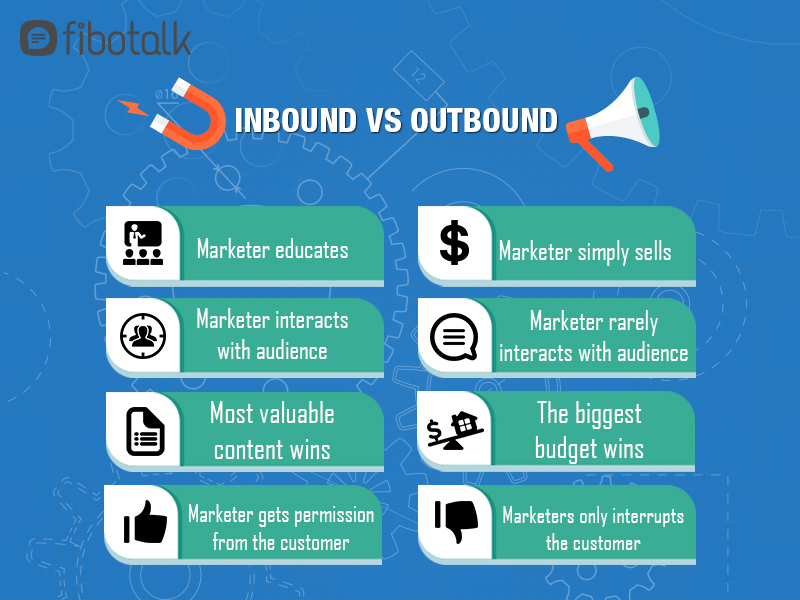
The fundamental difference between the both is that inbound marketing practices creating valuable content and then allure visitors through that. It heavily relies on more advanced technology platforms such as the internet, social media, mobile phones etc. to attract users. Instead of interrupting the masses with their marketing message, inbound marketing targets users that are already on the lookout for information and then pushes them into the sales funnel.
Outbound marketing, as mentioned before is more of a traditional form of marketing that relies on pushing out information to a large audience via advertisements, whether it is on television, radio, phones or the internet. However, it is an interruptive form of marketing as advertisement interrupts your favorite shows on T.V, telemarketing calls interrupt your work or personal life and so on.
So, it is obvious that businesses in the last decade have shifted their focus on inbound marketing and creating assets for people who are actively seeking relevant information. The trend of spamming people with ads has shifted to understanding customer behavior and psyche.
Interesting!
Let’s dive into what inbound marketing is all about and what are its branches.
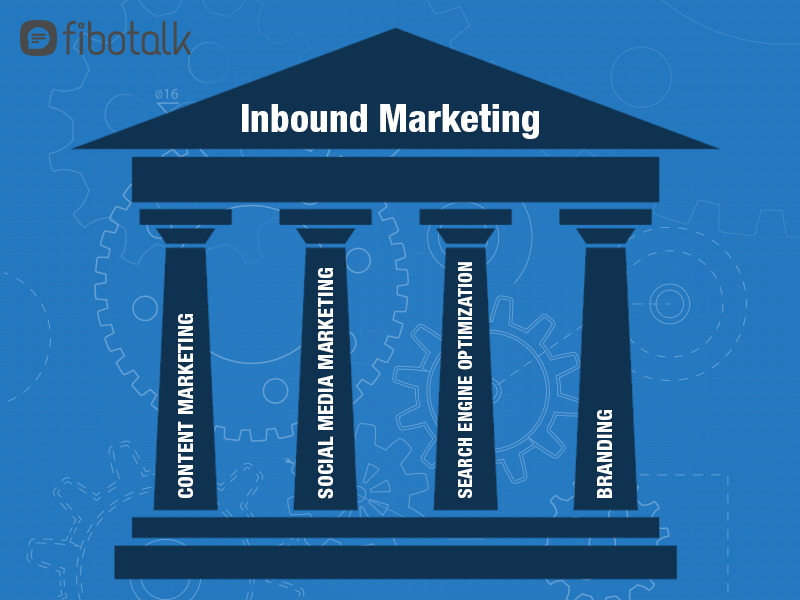
In a nutshell, inbound marketing has four main pillars:
Content marketing is one of the key pillars of inbound marketing. The main objective of content marketing is to create, publish and distribute content on online platforms to retain or attract potential customers by providing them valuable and relevant information.
So, as a marketer, you don’t push your prospects into making a purchase but induce interest in that particular product or service with the help of consistent, valuable and helpful content.
Once the prospect arrives on your website for this content, you can engage with them using conversational tools like email and live chat tools.

The content marketing institute defines content marketing as:
“Content marketing is a strategic marketing approach focused on creating and distributing valuable, relevant, and consistent content to attract and retain a clearly defined audience — and, ultimately, to drive profitable customer action.”
So, content marketing is done in order to achieve the following:
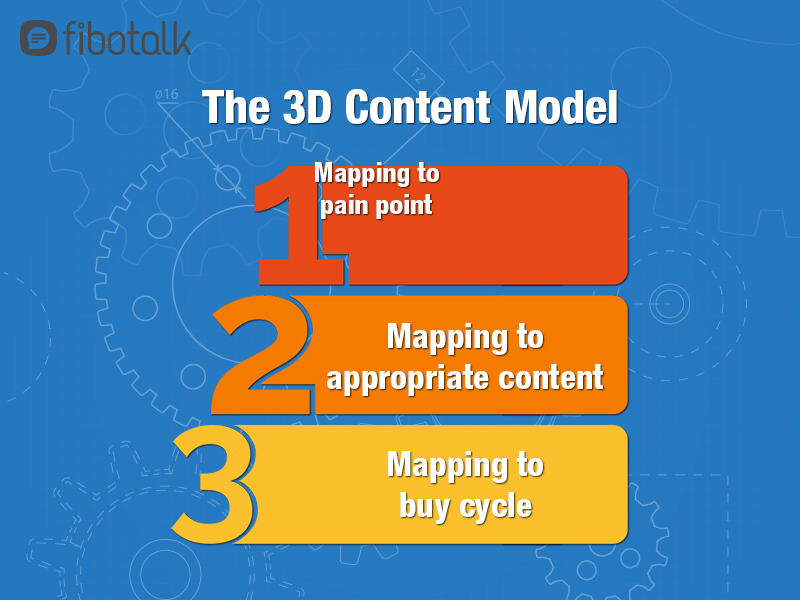
Generally, content marketing works on the strategy called the. The “3D” stands for 3 dimensions of content that is utilized to engage prospects and guide them into the buying cycle.
So, instead of trying to get the attention of everybody, you create valuable content that addresses the issues people face and then offer a solution with your service or product.
This approach has the following benefits:
Content marketing helps the prospects find information, which in return helps them to make their own mind up and therefore, giving you leads that are really interested in making a purchase.
The second pillar and very closely linked with content marketing is social media marketing. Social media has boomed in the past decade and has become a decisive tool in generating business for a lot of companies.
A lot of companies use social media to engage the audience in their posts to spread awareness and also to generate quality leads. The genius of social media is that you can target the audience that falls directly under the umbrella of your business niche.
Social media platforms like Facebook, Twitter and Instagram offer detailed insights on customer behavior and their interests through the different pages they like, the things they comment or tweet and so on.
These behaviors and interests are more than enough for a business to understand whether the audience is likely to be interested in their product or service. Using paid ads on social media simply lets you target the people who would be interested in your product or service.
This is completely different than traditional radio or tv ads because it is more precise and relevant.
There are over 3.03 billion users on social media as of 2018! Users between the ages of 18 and 34 are most likely to follow a brand. That is 95 percent of people!
These statistics show easily what a scope social media has in terms of marketing and spreading brand awareness.
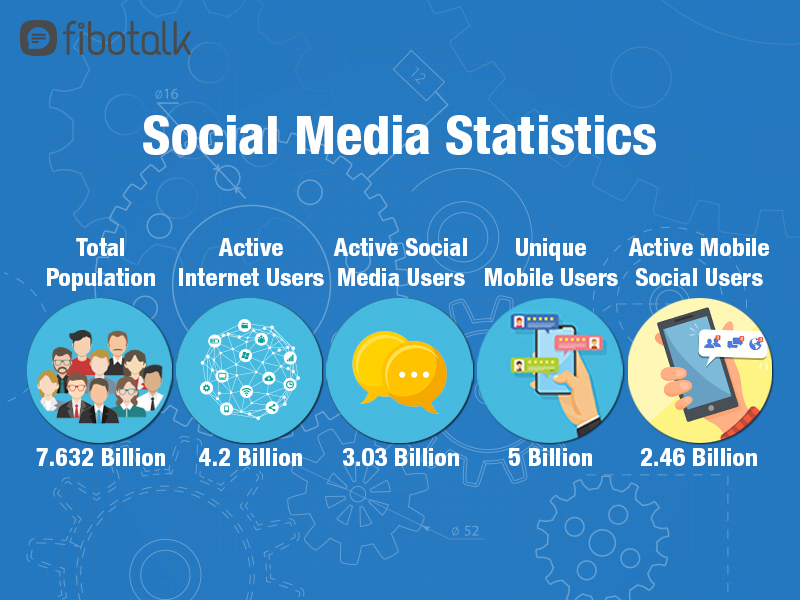
Another great statistic by Animoto shows that video content on social media is watched more than any other form of content. 67 percent of people watch videos from brands, while 65 percent watch videos from influencers and celebrities.
Such visual content is great to share valuable information and engage potential prospects in the need of getting your product or service and slowly guide them into your buying cycle with the right call to actions.
Another important thing about social media marketing is the activeness of your brand on the platforms. Staying active with consistent and valuable content, whether, in the form of videos, posts or images is highly important to maintain credibility.
So, you engage people with valuable content and pull them into your sales cycle.
The third and another important pillar of inbound marketing is search engine optimization (SEO). So, search engines like Google, Bing, Yahoo and many more have provided us a path to find relevant websites on the internet based on the keywords we type.
Imagine how the internet would be if there were no search engines?
It would be like being lost in the vastness of space with no means to go anywhere.
That’s the significance search engines add to the internet. And because they are so important, everyone on the internet uses them to find information, products, and services. This opens a huge scope for businesses to optimize their keywords so that they are found on the search engine for their products or services.
Taking an example of Google (the most popular search engine), it has over 63,000 searches on an average per second every day! And those searches generally include people finding products, services or information.
So, SEO becomes a gold mine for businesses because as we discussed earlier in this post, inbound marketing is about offering valuable content to people and pulling them in your buying cycle.
What is better than a person who is already googling “best live chat software” or “what are different parts of a guitar”
From the above keyword searches, you can easily make the assumption that the people searching have interests in the products, i.e. live chat software and guitar.
Now, when you utilize SEO tactics to optimize your website and offer valuable information they seek on your website (in this case, a live chat software or guitar), then there are more chances of engaging them and adding them into your buying cycle.
But it is not that simple at all! It is not as simple as paying for your ads and see them being broadcast everywhere. SEO is an organic process and sometimes take years to show great results. But because it is organic, the invested time and efforts get you the juiciest fruits!
And the efforts in trying to achieve this is what SEO essentially means.
Search engine optimization is of two types:
On Page SEO is about optimizing your business website so that it is more user-friendly and matches the standards of search engines. There are certain activities that are carried out in order to achieve a better optimization of the website:
Off page, SEO is generally referred to as link building. The idea is to improve the credibility of one’s website by building links on websites other than yours. It is achieved by the following activities:
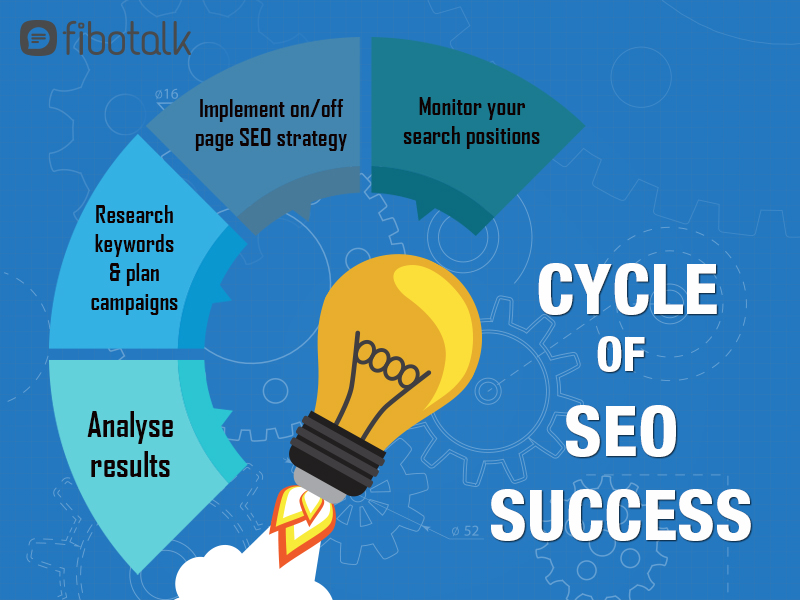
When all the off and on page activities are carried out in the correct fashion, then a business can increase it’s SERP (Search engine results page). The higher you are on the search engine ranking page, the more leads and eventually sales you can make for your business by helping potential prospects find relevant information on your website.
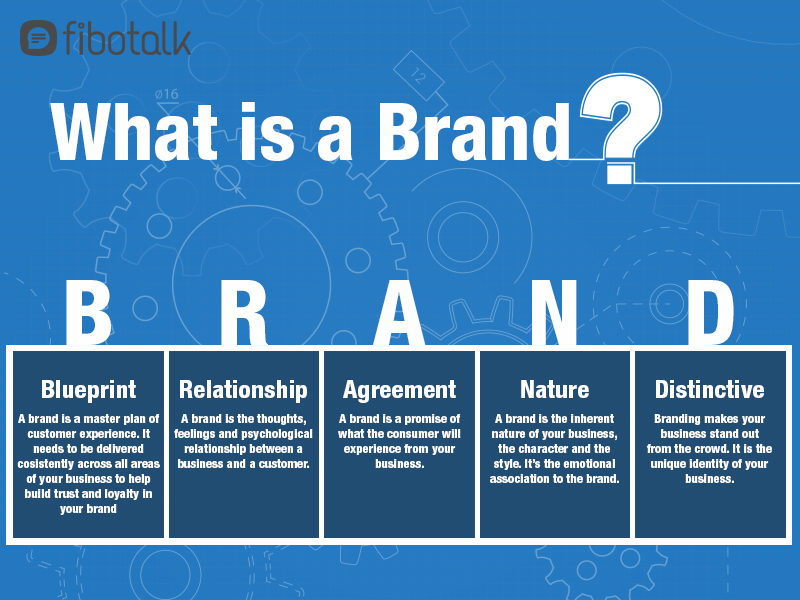
Entrepreneur defines branding as “The marketing practice of creating a name, symbol or design that identifies and differentiates a product from other products.”
But branding is not only limited to products, but it can also be of service or simply an entity. Even a rock band can be considered as a brand as they have a symbol or logo, a style of music that differentiates them from the others.
A brand, in brief, is a trigger that paints a unique picture of an entity into people’s mind. Branding is the effort to build a rapport or reputation of an organization with its marketing efforts.
So, branding can be considered that rope which ties all the different pillars of inbound marketing and makes it a complete package.
All the other pillars of inbound marketing create brand awareness and spread an ideology of the brand.
For example, Adidas recently changed its tag line to “here to create”. They did a lot of campaigns and started a hashtag of #heretocreate on social media. They also created ads with famous sports stars who are signed to Adidas. The whole idea behind this campaign was to change the brand’s identity from its former identity of “Impossible is nothing” to “here to create”.
So, whether you practice content marketing, social media or SEO, your business’ beliefs and identity runs with it. These practices not only help you to get leads, increase sales but also help you to create an image among the people who consume your content.
You can walk into a Nike store anywhere on this planet and you know the quality of their sneakers will be the same throughout the world. This trust that makes people believe in your products with full confidence is what a brand is, and it comes with being consistent in your business ethics and quality of your products or service.
So summing it all up, inbound marketing is the best type of marketing. In the last decade, businesses have shifted their budgets and focus on the inbound style of marketing as it has better ROI. It is safe to say that as we move towards the future, inbound marketing will be the sole way to market a product or a service.
